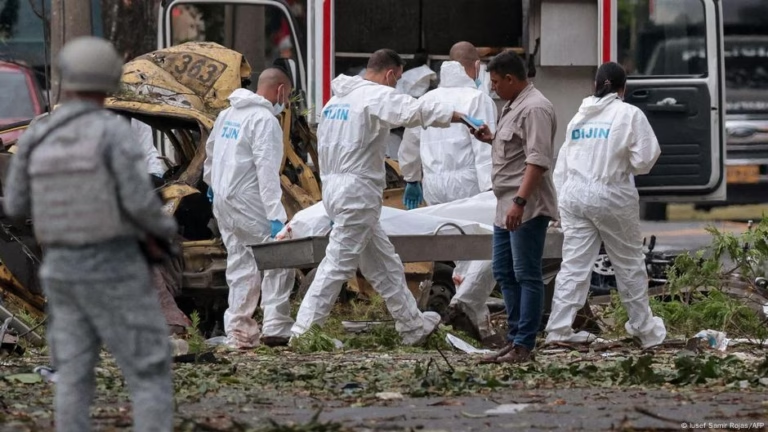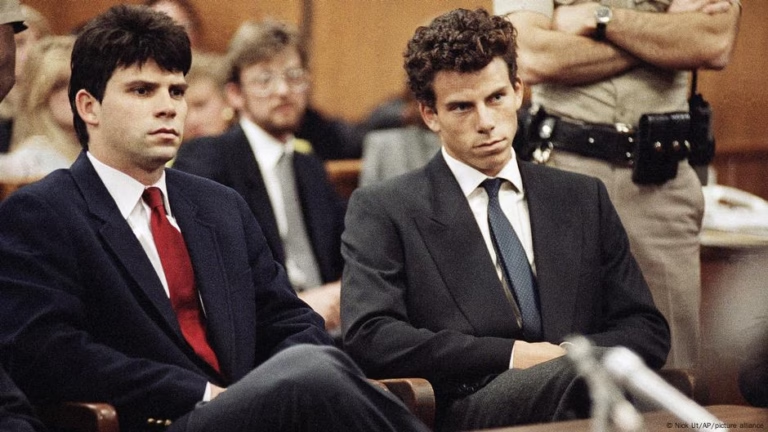Keeling had devised a simple way to collect clean air samples in glass flasks. He then used liquid nitrogen and later infrared technology to figure out the amount of CO2 in the sample.
The groundbreaking work helped shape modern climate science, and the observatory is still one of the world’s key stations for continuous monitoring of atmospheric CO2.
But scientists fear that work could soon be halted, ripping “a big hole in our scientific knowledge about Earth’s greenhouse gases,” said Noel Cressie, who directs the Center for Environmental Informatics at Australia’s University of Wollongong.
The US Department of Government Efficiency (DOGE) is considering shuttering offices in Hilo, Hawaii, where staff oversee the observatory’s daily operations. The lease amounts to $164,391 (€149,050) annually, said the cost-cutting body led by Tesla billionaire Elon Musk.
The offices are run by climate and ocean monitoring agency the National Oceanic and Atmospheric Administration (NOAA), which itself has been a major target of DOGE cuts.
International scientists warn the loss to global climate research would be huge if the observatory closes.
Mauna Loa has “an incredible data record about how things interact in the atmosphere,” said Cressie, pointing to its measurements of carbon dioxide, methane, and nitrous oxide — greenhouse gases that cause climate change.
CO2 monitoring satellites “do their best,” but what Mauna Loa contributes is “irreplaceable by satellites,” he said.
Why is Mauna Loa so important to climate science?
Charles David Keeling considered Mauna Loa a prime location to measure atmospheric CO2. Much in the way a doctor knows where the right spot is to measure a person’s temperature to get the best reading, said his son, Ralph Keeling.
At just over 4,100 meters (13,451 feet) above sea level, the observatory is in an ocean environment far from “things that can influence carbon dioxide,” said the physicist, who oversees the Mauna Loa project from the Scripps Institution of Oceanography at the University of California San Diego.
By that Ralph Keeling means sources of CO2 such as fossil-fuel burning cars as well as big ecosystems like forests that regularly absorb and release the gas.
His father’s work revealed natural CO2 fluctuations over days and seasons — such as the uptake of CO2 by plants in spring and its release during fall when vegetation decays. Significantly, his data showed a relentless rise in atmospheric CO2 levels, depicted in the famous Keeling Curve.
When the elder Keeling began his measurements in 1958, CO2 levels were around 315 parts per million. Now, they’re at 427 ppm.
That may not sound like much. But CO2 has an outsized impact in the same way that “cholesterol is only a tiny component of your blood, but it has special properties, so it matters how much you have,” said Ralph Keeling.
One of CO2’s important special properties is that it traps heat radiating from Earth’s surface. So even a seemingly small increase will cause global average temperature rises significant enough to fuel melting of the polar ice caps, rising sea levels and extreme weather.
No ‘alternative data sources’
Losing Mauna Loa would mean losing data from “a region of the world for which we don’t have other alternative data sources,” Josep Canadell, executive director of the UK-based Global Carbon Project, wrote DW in an email.
Without it, researchers would need to rely more heavily on remote sensing by satellite to monitor greenhouse gases, which presents challenges.
Long-term data sets are vital for scientists’ understanding of how Earth’s systems are responding to rising CO2 emissions over time. Breaking the world’s longest continuous measurement of atmospheric carbon dioxide at Mauna Loa would make it harder to track such trends.
CO2 monitoring satellites are also less precise. They’re high up in the atmosphere and “aerosols and clouds are spoiling the view,” said Noel Cressie. Using them requires a lot of measurement calibration to get more accurate readings — something that isn’t needed with Mauna Loa.
Mauna Loa, on the other hand, measures a variety of greenhouse gases and has instruments in a fixed location, “making those measurements incredibly accurate.”
Hilo office lease expires in August
According to a March congressional letter, the lease for the Hilo offices expires at the end of August. It remains unclear what it would mean for the overall project if DOGE cancels the lease.
But if Mauna Loa were halted it “would have a disproportionate impact compared to the losses of any other observatory,” wrote Josep Canadell.
It would be “one of the worst losses of environmentally significant data tracking the dynamics and health of planet Earth,” he added.
Canadell expressed further concerns about the possibility of the US shuttering its wider network of observatories tracking greenhouse gases.
The US makes “the largest contribution to the global networks that any single country makes.”
Tracking CO2 and its influence on the climate is crucial for preparing for more super-charged weather and other consequences of climate change, said Ralph Keeling.
“We have to get ready for all this,” said Keeling.
You can find out more about Charles Keeling’s groundbreaking work at the Mauna Loa station and the basics of climate science on the Living Planet episodeWhat does 1 ton of CO2 look like?
Edited by: Jennifer Collins







